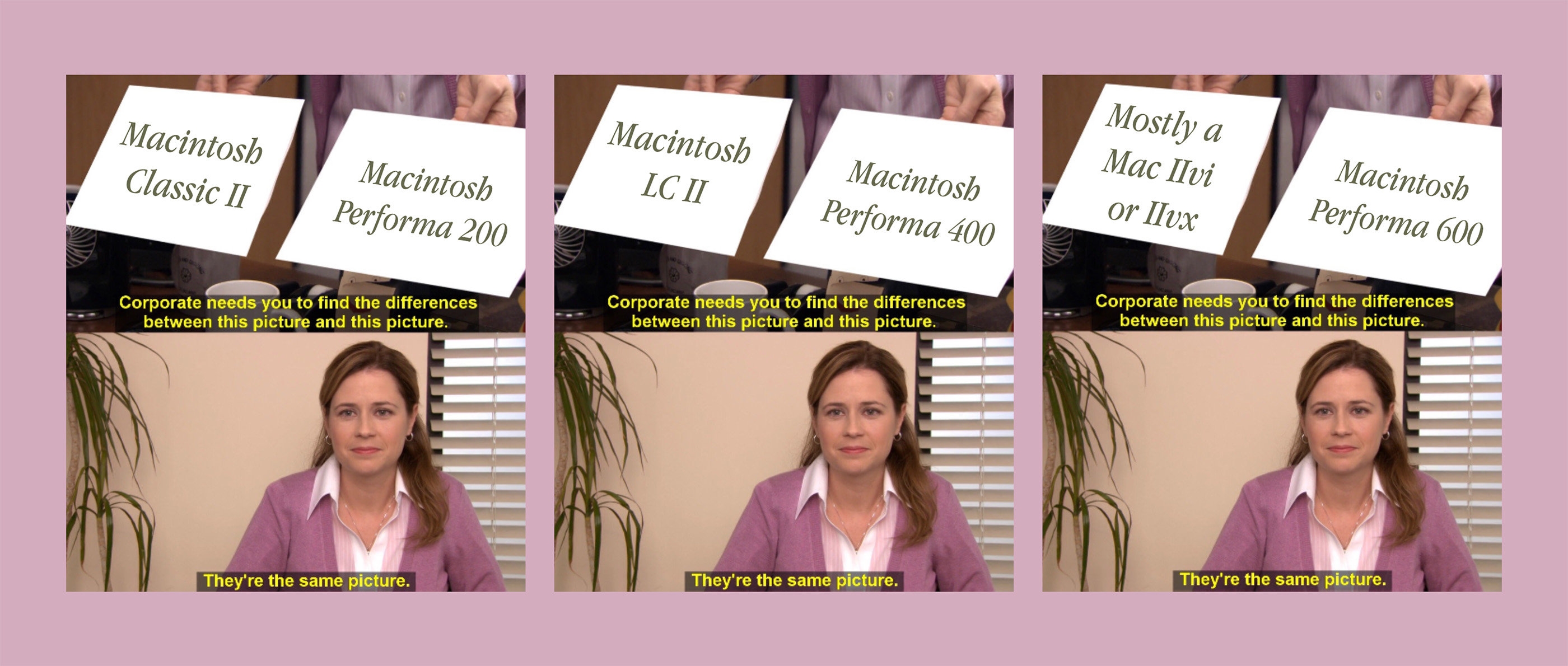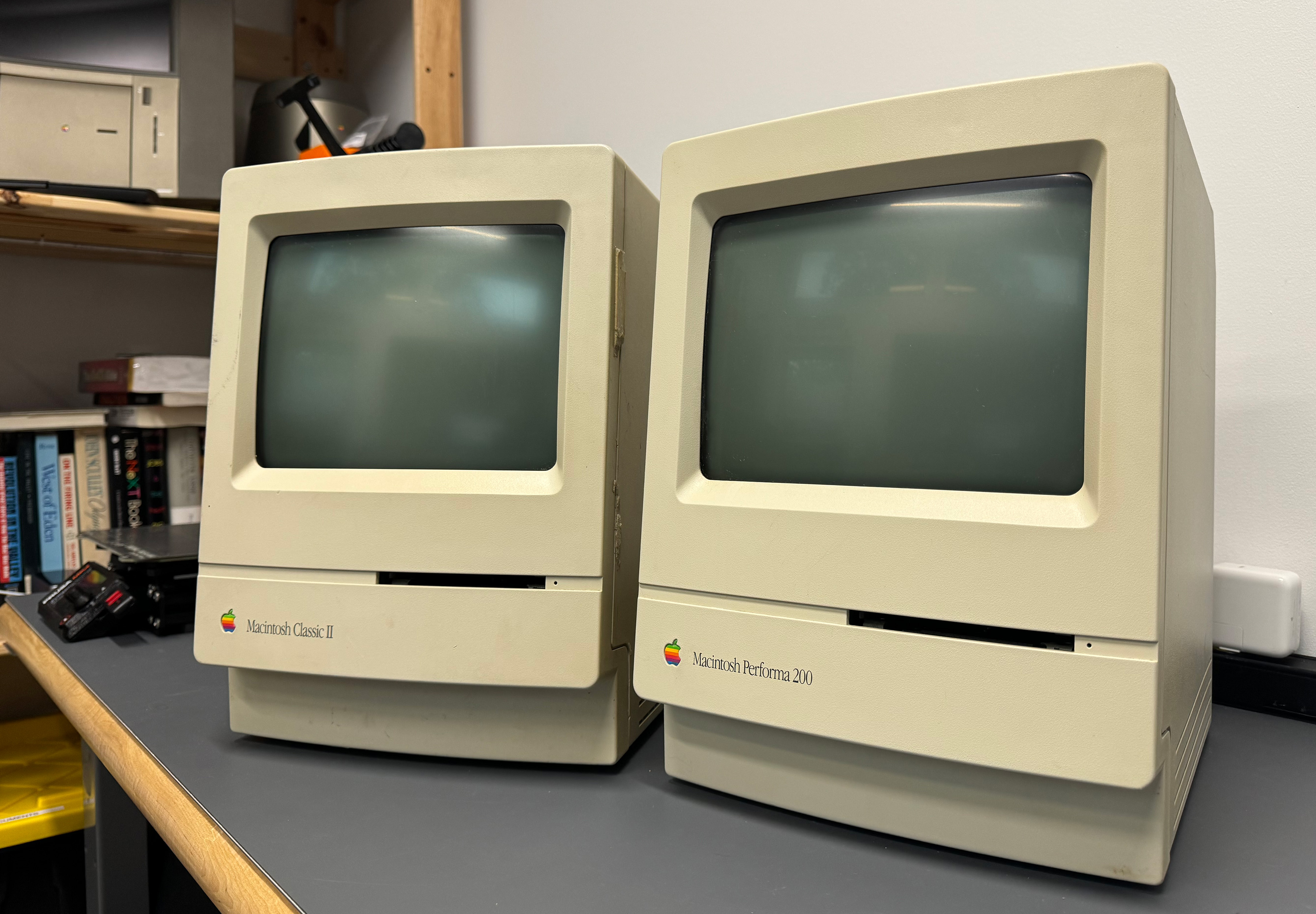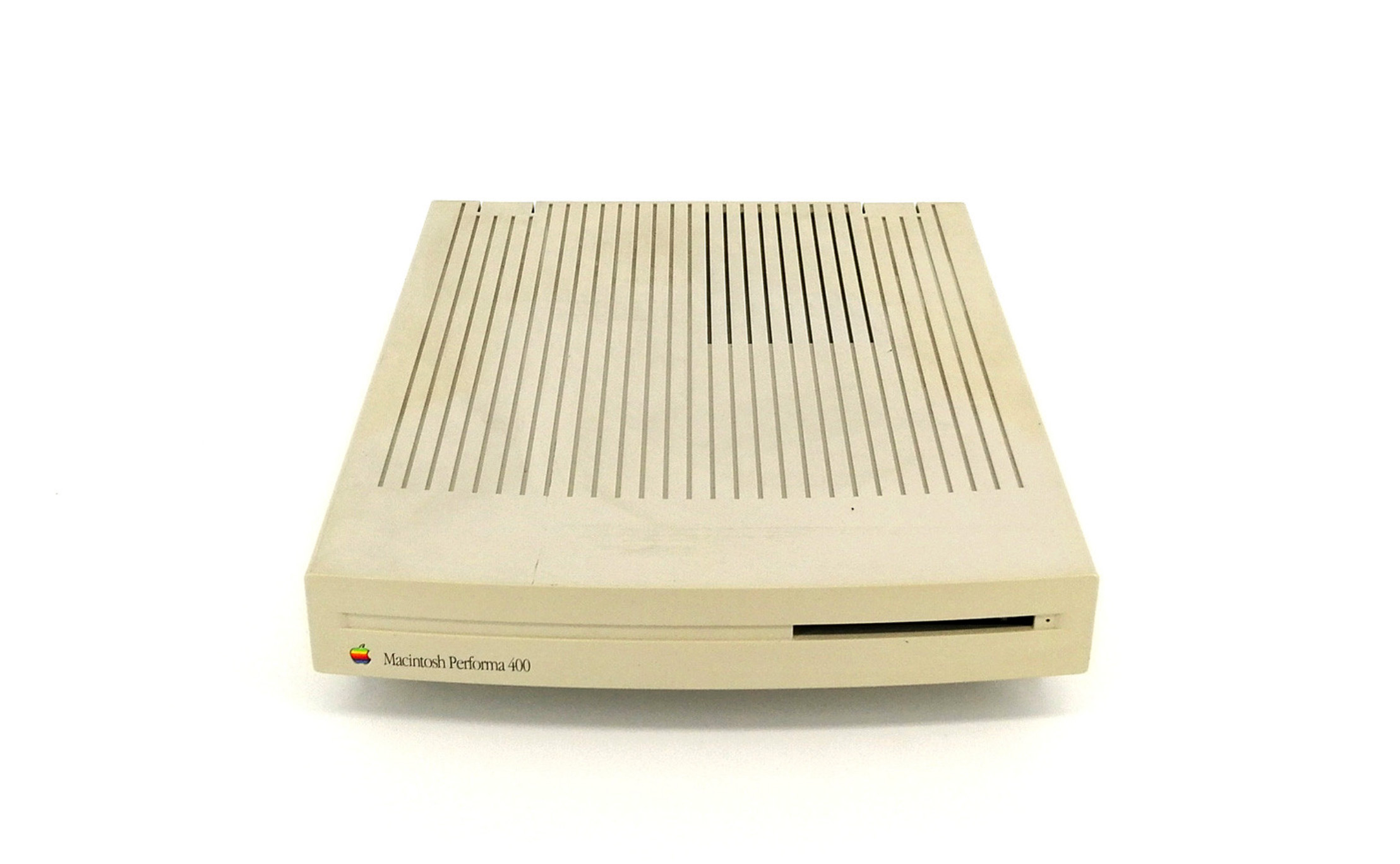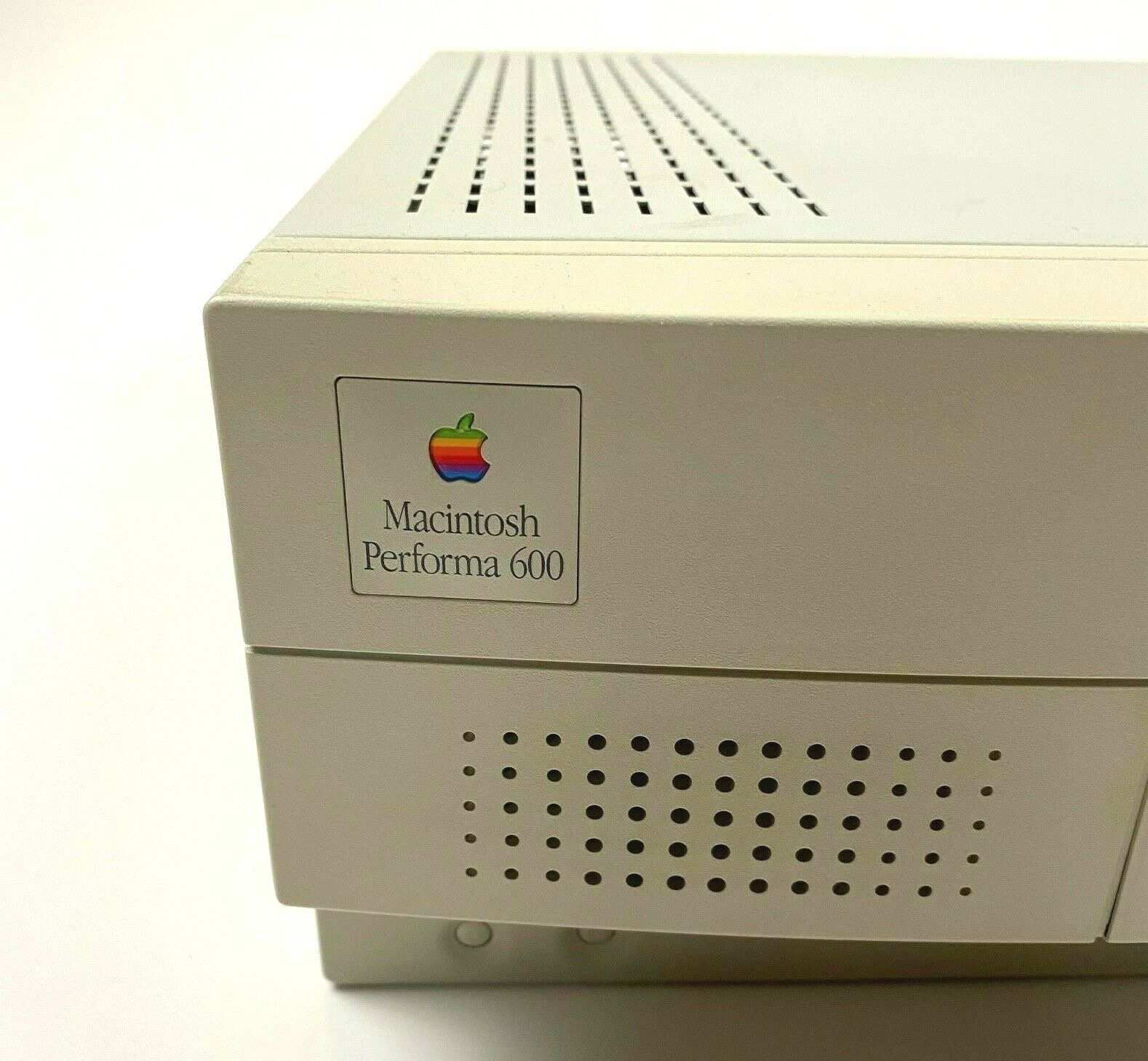In September 1992, the first batch of Macintosh Performas were announced. Last time, I wrote about what Apple hoped to achieve with these computers, so it’s now time to discuss the computers themselves.
In the initial press release about the systems, Apple’s Betty Taylor wrote:
All three Performa models use the powerful Motorola 68030 microprocessor, and share the I/O ports and expansion slots that customers expect to find in other Macintosh family members.
In addition, each Performa features Apple’s SuperDrive, a 3.5″ floppy disk drive capable of using disks from Windows, DOS and Apple II computers.
At this point, we need to revisit something that I wrote yesterday… that the Performa line was a bunch of other Macs that Apple tweaked, rebadged, and slapped some third-party software on, all before selling them in big-box stores.
That means talking about individual models can get weird, but that’s what I signed up for when I decided to write this series.
The first three Performa models are perfect examples of this phenomenon:

The Performa 200
By 1992, the compact Mac design was eight years old, but Apple was still churning out all-in-one screens with black-and-white nine-inch screens.
Two years before the Performa line launched, Apple put the Macintosh Classic on sale. It was the first Mac sold for less than $1,000 — coming in at $999 — but to make that possible, Apple cut corners. It had no expansion slot, and a lack of a memory management chip meant that the virtual memory feature in System 7 wasn’t supported. The 8 MHz Motorola 68000 made it no faster than machines first sold years before it.
In October 1991, Apple released the Macintosh Classic II. It cost $1,900 — almost double the original Classic — but was a much better computer, complete with a 16 MHz Motorola 68030 CPU and support for up to 10 MB of memory. Sadly, the Classic II still lacked the expansion slot that SE/30 users had come to know and love and had a 16-bit data bus that put a stranglehold on that sweet, sweet 32-bit CPU.
In 1992, someone at Apple took a Classic II off the shelf, taped a “Performa 200” badge on it, and probably went on vacation for six weeks. The two machines shared identical hardware specs, down to the ROM version. As the Classic II was on sale until September 1993, there were several months that both the Classic II and Performa 200 were both on the market, albeit in different sales channels.

These are basically the same computer. Both of my examples are pretty rough, sadly.
Apple said the compact design was “an excellent choice for space-conscious families who value its small footprint that fits into tight quarters and can be easily transported from room to room.”
The Performa 200 retailed for a mere $900, making it the cheapest Mac ever at the time of its launch.
Performa 400
The Performa 400 started life as the Macintosh LC II, with basically identical specs beyond the Performa shipping with 512K of video RAM by default, while the LC II could be had with 256K.
The Macintosh LC was the Mac mini of its day. The original LC was announced in October 1990 and was housed in a 3-inch thin chassis designed to sit underneath a CRT. As LowEndMac reports, its $2,500 price tag came with some compromises:
The first Mac crippled from the ground up, the LC (code-named Elsie, Prism, and Pinball) was designed to a new low price point of $2,500 with 2 MB of RAM and a 40 MB hard drive. The LC was the first Mac to run a 32-bit CPU on a 16-bit data bus, making memory access slower than it should be (the LC benchmarks at about 3/4 the performance of the Mac II, even though both use the same 16 MHz 68020 CPU). Although Apple had retired the 68020 chip with the Mac II in January 1990, it reintroduced it with the LC that October.
To add insult to injury, Apple programmed the ASICs to support no more than 10 MB of RAM even if more was installed.
Despite these issues, the LC was a huge hit, and Apple reportedly sold 500,000 units in the first year.
The LC II came along in March 1992, complete with the whole 16-bit data path/32-bit CPU issue, but now with 4 MB of onboard memory instead of the 2 MB found on the original LC. The most significant upgrade was the price — the LC II sold for just $1,400, or about $3,100 in 2024 dollars.

image via HomeComputerMuseum
When it was rebadged as the Performa 400, all of these features remained, and every model was sold with an 80 MB hard drive as standard equipment. As a bonus, Performa 400 machines came with a built-in modem when the LC II did not.
The Performa 400 sold for $1,180, a discount of $220 from the cost of the LC II. Like the LC II, it included on LC PDS slot for expansion.
Performa 600
The top-of-the-line model was the $2,000 Performa 600. Unlike its cheaper siblings, this machine’s starting point is a bit more complicated.

image via eBay
The 600 was basically a rebadged Macintosh IIvx, which is not a nameplate that brought with it great acclaim, as LowEndMac reports:
The Mac IIvx was an okay computer, but a big “Huh?” for Mac IIci users. Where the LC and LC II had been compromised by using a 32-bit processor on a 16-bit data bus, the IIvx ran a 32 MHz CPU on a 16 MHz bus. This gave it slower performance than the IIci, which was still available (stock IIci tests 30% faster than IIvx; adding 32 KB cache to the IIci bumps this to 60%).
In fact, the old 16 MHz Mac IIx outperformed the IIvx on some benchmarks! Needless to say, most serious Mac users chose the IIci over the IIvx.
The Mac IIvx and its near-twin, the Performa 600, were the first Macs available with a built-in CD-ROM drive and also the first Macs to use a metal case.
(When optioned with that built-in CD-ROM drive, the machine was renamed the “Performa 600CD.” This naming scheme would be used for many, many more computers in the Performa line.)
At this point, things get weird, as we also need to talk about the Macintosh IIvi. The IIvi was based on the IIvx, but lacked an FPU in its default configuration, meaning it was much slower under certain circumstances. The IIvi was not sold in the United States and was on the market for a mere four months.
The Performa 600 used the IIvi’s logic board and therefore also lacked an FPU in its stock form. While IIvi owners may have been willing to plunk down the extra cash for an FPU, I’m not sure Performa shoppers would have been as willing to do so.
History has not been kind to this machine, but it is important to note that it completed the “Good/Better/Best” strategy Apple implemented with these early Performas. All three machines were powered by a 68030, but the Performa 600 was clocked at 32 MHz, twice the speed of the 200 and 400.
It was an interesting option compared to those machines, even if its sibling’s position in the Mac II line was less than great. If you were looking for a Performa and needed maximum modularity, this was the one, as it came with three NuBus slots and one PDS slot.
In true Performa fashion, the 600’s price point of $2,000 was a deal compared to the IIvx’s price of $2,950.
(Tossing in the CD drive cost an additional $500, bringing the 600CD’s price tag to $2,500.)
The key to that price cut was nearly a dozen different CD titles that were bundled with the computer.
In short, the Performa 600 was a weird mashup of two Mac II models stuffed with third-party software.
Performa Displays
As only a single of the original Performas was an all-in-one, most buyers would need to pair their new machine with a display.
Both the 400 and 600 included a DB-15 video port, opening the door to quite a few Apple displays, but the company put the Performa name on two different displays.
The $305 “Apple Performa Display” was equipped with a 14-inch (13-inch viewable) CRT running at 640 x 480 resolution with a dot pitch of 0.39mm. For $95 more, the “Apple Performa Plus Display” came with the same specs, but an improved dot pitch of 0.29, for a clearer picture.
I’ve never seen either of these in person, but this image from Wikipedia raises questions for me about the strength of the built-in foot:

Creating the Template
The Performa 200, 400, 600, and 600CD set the stage for how the entire line would operate. Computers with very similar (or even identical) specs being sold across various sales channels.
To a degree, the system worked, at least at first. Here’s Andrew Gore, writing for MacWEEK in 1993:
The Macintosh Performas put on quite a show last Christmas, exceeding projected sales. Apple said the new consumer Macs sold so well that it will offer new configurations this spring and may add some new models by year-end.
Keith Fox, general manager of Apple USA’s consumer division, said the Performa 400 was the best seller, garnering 60 percent of the line’s sales. The Performa 600 CD, with 25 percent of total Performa sales, did surprisingly well, he said, considering it was the most expensive of the three consumer Macs. In fact, the CD-ROM-equipped 600 sold so fast that Apple couldn’t keep up with demand, he said.
“The CD phenomenon in the Mac industry is amazing. The CD is the gating factor [in Performa 600 CD shipments],” Fox said.
Only the Performa 200 failed to sell as well as projected, representing about 15 percent of total Performa sales, according to Fox.
The sales figures taught Apple that consumers are more interested in modular Macs than in the compact Classic design, Fox said.
He said Apple will expand the Performa line by adding additional peripherals, such as an external CD-ROM drive, and it will increase the software bundled with systems.
Gore continued:
Fox said that 91 percent of Performa systems are being used in the home, Apple’s target market. The majority of home users (33 percent) bought Performas as an educational machine for their children. Nineteen percent bought them so they could do work at home; 18 percent purchased Performas for home-based businesses; and 8 percent bought them for home management.
Of the home buyers, 62 percent had never owned a computer before. Of the 38 percent who had owned a computer before, 30 percent owned IBM PCs and compatibles.
Next time: the first batch of updated Performas arrive.
Become a member of 512 Pixels. Support projects like these, receive exclusive content in the monthly newsletter, and more!
![]()
![]()